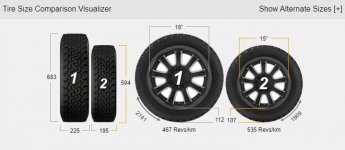The rental had 17-inch alloys with slightly overinflated tyres (0.3 bars) according to the pressure monitors. (Why do rental companies always over-inflate tyres?)
Ride quality was very poor for a premium car. So was interior noise with only 3,000 km on the clock. I think cars are getting noisier as manufacturers try to cut weight, although bafflingly the FWD F40 is even heavier than the F20.
Have a look at your own flesh jiggling the next time you’re in your Mini. Vibration = fatigue.
The F40 thumps over every blemish. Sure, the thump is taut and bass-heavy, but it’s objectively rough and loud and frequent all the same. And all to achieve less body roll than makes any difference outside the Nürburgring.
Scrambling around a rough wet corner in the real world would be smoother and faster on tyres with more sidewall, plus the greater slip angles would give you a clue about the traction limit.
Then there’s the automation that makes a hassle of simple things like jumping in and taking off. Mirrors that point at the ground when you select reverse, an electric handbrake that takes seconds to disengage (or engage), headlamps that won’t turn off when commanded (“not while driving”), and worse. Nothing responds directly but is filtered through software. Lots of “computer says no” nonsense. Typical of many cars now, of course.
This ultimate driving machine is huge and ill-defined on the outside but cramped on the inside. There isn’t much clear volume in the cabin, so moving always hits a protrusion – the huge arm rest, the intrusive dash, the massive and oddly located B-pillar. Seats are far too wide. Fussy generic euro-design everywhere.
It’s also electronic-feeling in the worst way. It feels like browsing a website today: you’re constantly fighting the machine. Little can be controlled by touch without looking at what you’re doing. Displays react slowly or disappear as you stare at them, compounding the feeling of not being quite in control. There’s a row of flat buttons that don’t reveal their state to eye or fingertip. The many steering-wheel buttons all feel the same. Basic things like the trip computer are buried in slow-response menus.
Just to adjust the fan speed requires pushing a teeny button – that looks and feels identical to buttons beside it – while observing a minuscule icon on a digital display to see what setting you’ve selected. (Think signal-strength icon on a smartphone.) The fan speed ramps so slowly – more ‘quality’ bull**** – that you can’t use its pitch for feedback as you push the soggy button. Honestly, I wouldn’t allow this control scheme on safety grounds if I was the regulator. That BMW of all companies chose to make it this way slightly amazed me. Maybe you’re supposed to set everything on auto and never touch a thing?
Meanwhile, alarms and blindspot indicators were constantly going off, especially in ancient Italian villages with literal two-inch clearances or on the Autostrade under the occasionally necessary heavy braking. Premium? More like hysterical. Clearly these proximity sensors are calibrated for an imaginary world of Teutonic space and order.
The whole thing convinced me that premium German cars have their priorities all wrong and car reviewers have uncritically followed them, mysteriously brainwashed.
Does what I dislike help clarify what I like in a car?


